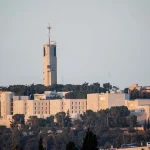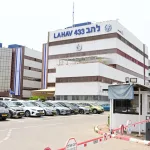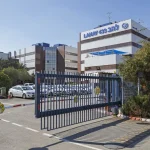Jerusalem, 10 July, 2025 (TPS-IL) — In a breakthrough that could transform how doctors detect blood cancers, Israeli scientists have developed a simple blood test that can identify the risk of leukemia — potentially replacing the need for invasive bone marrow biopsies.
For decades, diagnosing serious blood disorders like myelodysplastic syndrome (MDS) — a condition that impairs the development of healthy blood cells and can progress to acute myeloid leukemia (AML) — has required bone marrow biopsy, an invasive procedure involving local anesthesia and significant discomfort. But the new study shows, for the first time, that a routine blood sample can provide the same critical information.
The key lies in rare stem cells that occasionally migrate from the bone marrow into the bloodstream. Scientists at the Weizmann Institute in Rehovot discovered that these migratory stem cells carry early genetic signs of disease and can be analyzed using advanced single-cell sequencing techniques.
“We were surprised to find that these circulating stem cells contain enough information to detect MDS and estimate the risk of progression to leukemia,” said Prof. Liran Shlush. “This finding has the potential to replace bone marrow aspirations with a simple, much less invasive blood test.”
The findings were recently published in the peer-reviewed Nature Medicine days after the team’s laboratories were damaged by an Iranian ballistic missile on June 19. A building containing the institute’s life sciences laboratory, including DNA and tissue samples, laboratory mice, computers, lab equipment, and more was destroyed along with a second empty building that was to contain chemistry labs. Several other buildings were damaged.
The study, conducted in collaboration with Israeli and American researchers and led by Dr. Nili Furer, Nimrod Rapoport, and Oren Milman, also from the Weizmann Institute, not only presents a new diagnostic tool but also provides insights into how aging and disease are connected. About one-third of people over the age of 40 develop mutations in their blood stem cells. These mutations increase the risk not only of leukemia, but also of heart disease, diabetes, and general physical decline.
“Our work shows that through a standard blood draw, we can now see into the bone marrow,” said Dr. Furer. “That means earlier detection, more accessible testing, and potentially better outcomes for patients.”
The research also revealed that these migratory stem cells can act as a biological clock, offering clues about a person’s chronological and biological age. Interestingly, the study found that in men, the composition of these cells changes earlier in a direction that increases the risk of cancer. This helps to explain the higher rates of blood cancers in males.
“We now have a cellular explanation for why men are more likely to develop these cancers,” said Prof. Amos Tanai. “It’s a discovery that could reshape how we assess cancer risk and aging.”
The blood test is currently being evaluated in large-scale clinical trials at medical centers worldwide. While the immediate application is diagnosing MDS and leukemia risk, researchers believe the technique could eventually be used to detect a range of blood-related disorders earlier and less invasively.
Shlush, who also serves as a senior physician at Assuta Medical Center in Ashdod and Maccabi Health Services, is working to bridge the gap between research and practice. He leads Weizmann’s new Miriam and Aaron Gutwirth School of Medicine, due to open in October. Unlike traditional programs, the school will tightly integrate clinical training and biomedical research.
“We’re designing a program where the practice of medicine and scientific discovery go hand in hand,” Shlush said. “That integration is essential if we want to prepare doctors for the future of personalized medicine.”
The discovery opens a door for easier and safer diagnosis of MDS, earlier detection of leukemia risk, and gender-specific risk profiling. Since the test is based on a blood draw rather than a surgical procedure, it could be scaled for routine checkups.
Moreover, because the migratory blood stem cells also function as a kind of biological clock, the test could help doctors determine how fast someone is aging at the cellular level and assess when and how age-related diseases might appear.
Despite the recent damage to their facilities, the team remains focused on innovation. “Science doesn’t stop,” said Tanai. “Even under pressure, we’re moving forward—bringing better tools and better hope to patients around the world.”


























